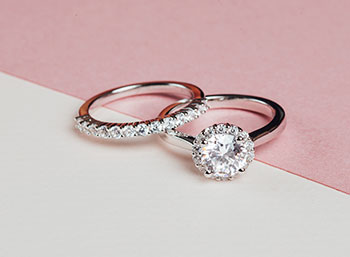
Veeral Rathod explains why his jewelry stores have embraced lab-created diamonds and the Spence sensibility
While many jewelry retailers wrestle with how to respond to the growing popularity of lab-grown diamonds, Spence Diamonds has embraced the trend with gusto. The Vancouver, British Columbia–based fine jewelry chain, which has stores in Canada plus California, Arizona, and Texas, produces a proprietary collection of lab-created diamonds that it retails alongside earth-mined diamonds and jewelry collections.
Spence debuted its lab-grown diamond line, Artisan Created Diamonds, in 2017, and has seen the product become a primary sales driver, says Veeral Rathod, the company’s chief marketing officer. The retailer sells only lab-grown diamonds that grade high on the Four Cs, and Rathod adds that the recent introduction of larger lab-created diamonds into the market has been a boon for Spence.
“We think lab-grown diamonds are a fascinating innovation, especially the development that’s happened in the last three years where we’ve seen more bridal-quality stones produced,” Rathod says. The company’s policy is not to push mined over lab-created (or vice versa) on the sales floor, but to present shoppers with both options. “We believe every customer who walks through the door should be able to see everything that’s available,” explains Rathod, “and make their choice from there.”
 How is Spence Diamonds uniquely positioned to retail lab-created diamonds?
How is Spence Diamonds uniquely positioned to retail lab-created diamonds?
We do a lot of diamond education in our stores. All of our sales consultants are GIA-certified—we put them through a rigorous training—so our sales process is much more educational than what I would consider most to be. With the advent of lab-grown diamonds, we recognized early that because education was a strength of ours, we could leverage that and help consumers understand the differences between mined and lab-grown diamonds.
What went into the creation of Artisan Created Diamonds?
Our legacy includes offering the finest earth-mined diamonds, so we wanted to do the same in the lab-grown category. We’re still looking for stones that grade high on the Four Cs in lab-grown, because we want to build trust in our customers by ensuring they get the highest-quality stone they can within their budget. We only offer graded stones in the stores. [De Beers’ lab-created collection] Lightbox is capturing a corner of the market with bulk-grade lab-created diamonds. We, in contrast, feel strongly that lab-grown diamonds can be bridal-quality.
How do you guarantee the quality of lab-grown diamonds and jewelry?
I don’t know where the pricing is going to go on lab-grown, but at Spence we offer the same warranties and trade-up policy for lab-grown diamonds as we do for earth-mined diamonds. We do that so we can look the customer in the eye and say, “We’re going to back it up.”
How does Spence merchandise jewelry to emphasize that there’s a diamond choice?
We have a lot of open displays, and all of our bridal rings are prototypes, so customers can be very hands-on. The tags give you the price for the ring with both a mined diamond and a lab-grown diamond.

Walk us through what typically happens with a customer weighing his or her diamond options.
When you put two stones in front of the customer and tell them, for example, that you can have a 1 carat earth-mined diamond or a 1.3 carat lab-created diamond of the exact same quality, or even a little better, for the same price, most customers will say, “I want to hear more.” They always ask first, “Is it real?” And we can tell them that, yes, the Federal Trade Commission has ruled it’s the same thing. Then they ask if it’s graded and insured, and where the pricing is going to go. In the end, 90 percent will choose the lab-grown over the mined diamond in the United States, and 80 percent will do the same in Canada.
What else has Spence discovered about the lab-diamond consumer?
The primary reason for selecting a lab diamond over a mined one is value. Everyone in the diamond business is attuned to ethical sourcing and environmental factors when it comes to diamonds. I would characterize those as great supporting selling points. But it’s not the primary point. Value is.